- Home
- Haruki Murakami
Underground Page 2
Underground Read online
Page 2
Somewhere along the line Hayashi seems to have had profound doubts about his career as a doctor and, while searching for answers beyond orthodox science, he became seduced by the charismatic teachings of Shoko Asahara and suddenly converted to Aum. In 1990 he resigned from his job and left with his family for a religious life. His two children were promised a special education within the cult. His colleagues at the hospital were loath to lose a man of Hayashi’s caliber and tried to stop him, but his mind was made up. It was as if the medical profession no longer held anything for him. Once initiated into the cult, he soon found himself among Asahara’s favorites and was appointed Minister of Healing.
Once he had been called upon to carry out the sarin plan, Hayashi was brought to Aum’s general headquarters, Satyam No. 7, in Kamikuishiki Village near Mt. Fuji, at 3 A.M. on March 20, where, together with the four other principal players, he rehearsed the attack. Using umbrellas sharpened with a file, they pierced plastic bags filled with water rather than sarin. The rehearsal was supervised by Hideo Murai of the Aum leadership. While comments from the other four members indicate that they enjoyed this practice session, Hayashi observed it all with cool reserve. Nor did he actually pierce his bag. To the 48-year-old doctor, the whole exercise must have seemed like a game.
“I did not need to practice,” says Hayashi. “I could see what to do, though my heart wasn’t in it.”
After the session, all five were returned by car to the Shibuya ajid, whereupon our physician Hayashi handed out hypodermic needles filled with atropine sulphate to the team, instructing them to inject it at the first sign of sarin poisoning.
On the way to the station, Hayashi purchased gloves, a knife, tape, and sandals at a convenience store. Niimi, the driver, bought some newspapers in which to wrap the bags of sarin. They were sectarian newspapers—the Japan Communist Party’s Akahata (Red Flag) and the Soka Gakkai’s Seikyo Shimbun (Sacred Teaching News)—“more interesting because they’re not papers you can buy just anywhere.” That was Niimi’s little in-joke. Of the two papers, Hayashi chose Akahata: a rival sect’s publication would have been too obvious and therefore counterproductive.
Before getting on the subway, Hayashi donned a gauze surgical mask, of the sort commonly worn by many commuters in winter to prevent cold germs from spreading. The train number was A725K. Glancing at a woman and child in the car, Hayashi wavered slightly. “If I unleash the sarin here and now,” he thought, “the woman opposite me is dead for sure. Unless she gets off somewhere.” But he’d come this far; there was no going back. This was a Holy War. The weak were losers.
As the subway approached Shin-ochanomizu Station, he dropped the bags of sarin by his right foot, steeled his nerves, and poked one of them with the end of his umbrella. It was resilient and gave a “springy gush.” He poked it again a few times—exactly how many times he doesn’t remember. In the end, only one of the two bags was found to have been punctured; the other was untouched.
Still, the sarin liquid in one of the bags completely evaporated and did a lot of damage. At Kasumigaseki two station attendants died in the line of duty trying to dispose of the bag. Train A725K was stopped at the next station, Kokkai-gijidomae—the stop for the Japanese National Assembly—all passengers were evacuated, and the cars were cleaned.
Two people were killed and 231 suffered serious injuries from Hayashi’s sarin drop alone. *
“Nobody was dealing with things calmly”
Kiyoka Izumi (26) *
Ms. Kiyoka Izumi was born in Kanazawa, on the north central coast of the Sea of Japan. She works in the PR department of a foreign airline company. After graduation she went to work for Japan Railways (JR), but after three years she decided to pursue her childhood dream of working in aviation. Even though job transfers to airline companies are extremely difficult in Japan—only one in a thousand “midcareer” applicants is accepted—she beat the odds, only to encounter the Tokyo gas attack not long after starting work.
Her job at JR was boring to say the least. Her colleagues objected to her leaving, but she was determined. It was good training, but the union-dominated atmosphere was too confining and specialized. She wanted to use English at work. Still, the emergency training she received at JR proved invaluable in unexpected circumstances …
At the time I was living in Waseda [northwest central Tokyo]. My company was in Kamiyacho [southeast central Tokyo], so I always commuted by subway, taking the Tozai Line, changing at Otemachi for the Chiyoda Line to Kasumigaseki, then one stop on the Hibiya Line to Kamiyacho. Work started at 8:30, so I’d leave home around 7:45 or 7:50. That got me there a little before 8:30, but I was always one of the earliest to start. Everybody else showed up just in time. With Japanese companies, I’d always learned you were expected to arrive thirty minutes to an hour before starting, but with a foreign company the thinking is that everyone starts work at his or her own pace. You don’t get any brownie points for arriving early.
I’d get up around 6:15 or 6:20. I rarely eat breakfast, just a quick cup of coffee. The Tozai Line gets pretty crowded during rush hour, but if you avoid the peak, it’s not too bad. I never had any problem with perverts copping a feel or anything.
I never get ill, but on the morning of March 20 I wasn’t feeling well. I caught the train to work anyway; got off the Tozai Line at Otemachi and transferred to the Chiyoda Line, thinking, “Gosh, I’m really out of it today.” I inhaled, then suddenly my breathing froze—like that.
I was traveling in the first car on the Chiyoda Line. It wasn’t too crowded. All the seats were pretty much taken, but there were only a few passengers standing here and there. You could still see all the way to the other end.
I stood at the front next to the driver’s compartment, holding the handrail by the door. Then, like I said, when I took a deep breath, I got this sudden pain. No, it wasn’t so much painful. Really it was like I’d been shot or something, all of a sudden my breathing completely stopped. Like, if I inhaled any more, all my guts would come spilling right out of my mouth! Everything became a vacuum, probably because I wasn’t feeling well, I thought; but, I mean, I’d never felt so bad. It was that intense.
And then, when I think back on it now it seems kind of odd, but I thought, “Just maybe my grandad’s died.” He lived up north in Ishikawa Prefecture and was 94 years old at the time. I’d heard he’d been taken ill, so maybe this was a kind of sign. That was my first thought. Maybe he’d died or something.
After a while I was able to breathe again somehow. But by the time we passed Hibiya Station, one stop before Kasumigaseki, I got this really bad cough. By then everyone in the car was coughing away like mad. I knew there was something strange going on in the car. The other people were so excited and everything …
Anyway, when the train stopped at Kasumigaseki I got off without giving it much thought. A few other passengers called out to the station attendant, “Something’s wrong! Come quick!” and brought him into the car. I didn’t see what happened after that, but this attendant was the one who carried out the sarin packet and later died.
I left the Chiyoda Line platform and headed for the Hibiya Line as usual. When I reached the platform at the bottom of the stairs I heard the emergency alarm go off: Bee-eee-eep! I knew immediately from my time working for Japan Railways there’d been an accident. That’s when an announcement came over the station PA. And just as I was thinking “I’d better get out of here” a Hibiya Line train arrived from the opposite direction.
I could see from the station attendants’ confusion that this was no ordinary situation. And the Hibiya Line train was completely empty, not a passenger on board. I only found out later, but in fact that train had also been planted with sarin gas. They’d had a crisis at Kamiyacho Station or somewhere, and dragged off all the passengers.
After the alarm there was an announcement: “Everyone evacuate the station.” People were making for the exits, but I was beginning to feel really sick. So instead of going straight out, I thought I�
��d better go to the toilet first. I looked all over the station to find the stationmaster’s office, and right next to that the toilets.
As I was passing the office, I saw maybe three station attendants just lying there. There must have been a fatal accident. Still, I carried on to the toilet and when I came out I went to an exit that emerged in front of the Ministry of Trade and Industry building. This all took about ten minutes, I suppose. Meanwhile they’d brought up the station attendants I’d seen in the office.
Once out of the exit I took a good look around, but what I saw was—how shall I put it?—“hell” describes it perfectly. Three men were laid on the ground, spoons stuck in their mouths as a precaution against them choking on their tongues. About six other station staff were there too, but they all just sat on the flower beds holding their heads and crying. The moment I came out of the exit, a girl was crying her eyes out. I was at a loss for words. I didn’t have a clue what was happening.
I grabbed hold of one of the station attendants and told him: “I used to work for Japan Railways. I’m used to dealing with emergencies. Is there any way I can help?” But he just stared off into space. All he could say was: “Yes, help.” I turned to the others sitting there. “This is no time to be crying,” I said. “We’re not crying,” they answered, though it looked like they were crying. I thought they were grieving for their dead colleagues.
“Has anyone called an ambulance?” I asked, and they said they had. But when I heard the ambulance siren, it didn’t seem to be coming our way. For some reason, we were the last to get help, so those in the most serious condition were last to be taken to the hospital. As a result, two people died.
TV Tokyo cameramen were filming the whole scene. They’d parked their van nearby. I ran after the film crew, saying: “Now’s not the time for that! If you’ve got transport, take these people to the hospital!” The driver conferred with his crew and said, “All right, fine.”
When I worked for JR, I was taught always to carry a red scarf. In an emergency you could wave it to stop trains. So there I was, thinking “scarf.” Someone lent me a handkerchief, but it was so small I ended up giving it to the TV-crew driver and instructing him: “Get these people to the nearest hospital. It’s an emergency, so honk your horn and drive through red lights if you have to! Just keep going!”
I forget the color of the handkerchief; it was just some print. I don’t remember whether I told him to wave it or tie it to his side mirror. I was pretty excited at the time, so my memory’s not that clear. Later when I met Mr. Toyoda, he reminded me, “I never returned your handkerchief,” and gave me a new one. He’d been sick in the backseat and used mine.
We managed to lift Mr. Takahashi, the station attendant who died, into the back, along with another assistant. And still there was room, so one more station assistant got into the van. I think Mr. Takahashi was still alive at that point. But at first glance I thought, “He’s a goner.” Not that I’d ever witnessed death, I just knew. I could picture it; he was going to die this way. But still I had to try and help, somehow.
The driver pleaded with me, “Miss, you come along with us,” but I said, “No, I’m not going.” There were still lots of others being brought above ground and someone had to look after them, so I stayed behind. I don’t know to which hospital the van went. I don’t know what happened to them afterward either.
Then there was that girl nearby, crying and trembling all over. I stayed with her and tried to comfort her, saying, “There there, it’s all right,” until finally the ambulance came. All that time I looked after lots of different people, all of them white-faced, completely washed out. One man, fairly old by the look of him, was foaming at the mouth. I had no idea humans could foam like that. I unbuttoned his shirt, loosened his belt, and took his pulse. It was really fast. I tried to rouse him, but it was no use. He was completely unconscious.
This “old man” was in fact a station attendant. Only he’d removed his uniform jacket. He was pale and his hair was thin, so I mistook him for an elderly passenger. I later found out he was Mr. Toyoda, a colleague of the two staff members [Mr. Takahashi and Mr. Hishinuma] who died. He was the only one of the three injured station attendants who survived, and he was one of the longest in the hospital.
The ambulance arrived. “Is he conscious?” they asked. “No!” I yelled. “But he has a pulse!” The ambulance team put an oxygen mask over his mouth. Then they said, “There’s one more [i.e., a respirator unit]. If there’s anyone else in pain, we’ll take them.” So I inhaled a little oxygen, and the crying girl took a good long dose. By the time we had finished there was a media stampede. They surrounded the girl and the poor thing was seen on television all day.
While I was looking after everyone, I completely forgot my own pain. It was only at the mention of oxygen that it occurred to me, “Come to think of it, I’m breathing funny myself.” Yet at that very moment, I didn’t make a connection between the gas attack and my condition. I was all right, so I had to look after the people who had really suffered. Just what the incident was I didn’t know, but whatever it was it was big. And like I said before, I’d been feeling under the weather since the morning, so I was convinced my feeling a little off was just me.
In the midst of all this, a colleague from work passed by. He helped me rescue the girl from the clutches of the media. Then he suggested we walk to the office together, so I thought, “Okay, we’ll walk to work.” It takes about thirty minutes on foot from Kasumigaseki to my office. As I was walking, I found it a bit hard to breathe, but not so bad that I had to sit down and rest. I was able to walk.
When we got to the office, my boss had seen me on TV, and everyone was asking, “Ms. Izumi, are you really okay?” It was already ten o’clock by the time I got to the office. My boss said, “How about resting a bit? You shouldn’t tax yourself,” but I still didn’t really understand what had happened, so I just got on with my work. After a while a message came from Personnel: “Seems it was poison gas, so if you start to feel ill you’re to report to the hospital immediately.” And just about then my condition was getting worse. So they put me in an ambulance at the Kamiyacho intersection and took me to Azabu Hospital, a small place not far away. Twenty people had gone there already.
I had coldlike symptoms for a week after that. I had this asthmatic cough, and three days later a high fever, with a temperature of over 40°C [104°F]. I was sure the thermometer was broken. The mercury shot up all the way to the top of the scale. So actually my temperature might have been even higher. All I know is I was completely immobilized.
Even after the fever resided, the wheezing persisted for about a month; clearly the effects of sarin in my bronchial tubes. It was incredibly painful. I mean, I’d start coughing and never stop. It was so painful I couldn’t breathe. I was coughing all the time. I’d be talking like this and suddenly it would start. In PR you have to meet people, so working under those conditions was really hard.
And I kept having these dreams. The image of those station attendants with spoons in their mouths stuck in my head. In my dreams, there were hundreds of bodies lying on the ground, row upon row far into the distance. I don’t know how many times I woke in the middle of the night. Frightening.
As I said, there were people foaming at the mouth where we were, in front of the Ministry of Trade and Industry. That half of the roadway was absolute hell. But on the other side, people were walking to work as usual. I’d be tending to someone and look up to see passersby glance my way with a “what-on-earth’s-happened-here?” expression, but not one came over. It was as if we were a world apart. Nobody stopped. They all thought: “Nothing to do with me.”
Some guards were standing right before our eyes at the ministry gate. Here we had three people laid out on the ground, waiting desperately for an ambulance that didn’t arrive for a long, long time. Yet nobody at the ministry called for help. They didn’t even call us a taxi.
It was 8:10 when the sarin was planted, so that makes ove
r an hour and a half before the ambulance arrived. All that time those people just left us there. Occasionally the television would show Mr. Takahashi lying dead with a spoon in his mouth, but that was it. I couldn’t bear to watch it.
MURAKAMI: Just supposing, what if you’d been one of those people across the road at the time, on your way to work. Do you think you’d have crossed over to help?
Yes, I think so. I wouldn’t have just ignored them, no matter how out of character it might have been. I’d have crossed over. The fact is, the whole situation made me want to cry, but I knew if I lost control that would have been the end of it. Nobody was dealing with things calmly. No one even caring for the sick. Everyone just abandoned us there the whole time and walked on by. It was absolutely terrible.
As to the criminals who actually planted the sarin, I honestly can’t say I feel much anger or hatred. I suppose I just don’t make the connection, and I can’t seem to find those emotions in me. What I really think about are those families that have to bear the tragedy, their suffering is so much bigger to me than any anger or hatred I might feel toward the criminals. The fact that someone from Aum brought sarin onto the subway … that’s not the point. I don’t think about Aum’s role in the gas attack.

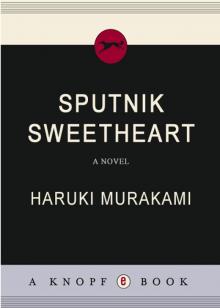 Sputnik Sweetheart
Sputnik Sweetheart Dance Dance Dance
Dance Dance Dance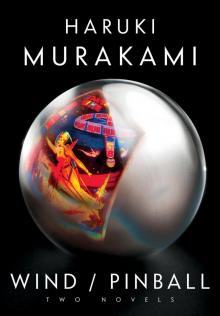 The Wind (1) and Up Bird Chronicle (2)
The Wind (1) and Up Bird Chronicle (2) Blind Willow, Sleeping Woman
Blind Willow, Sleeping Woman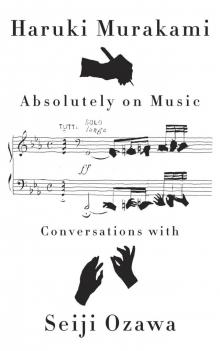 Absolutely on Music: Conversations With Seiji Ozawa
Absolutely on Music: Conversations With Seiji Ozawa Norwegian Wood
Norwegian Wood South of the Border, West of the Sun
South of the Border, West of the Sun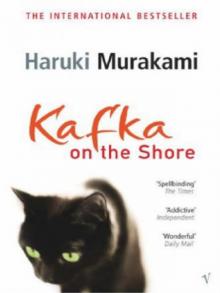 Kafka on the Shore
Kafka on the Shore Men Without Women
Men Without Women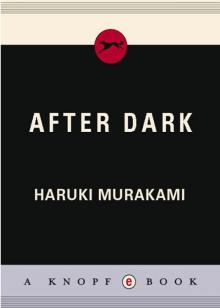 After Dark
After Dark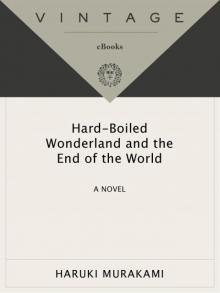 Hard-Boiled Wonderland and the End of the World
Hard-Boiled Wonderland and the End of the World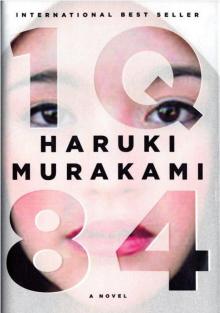 1q84
1q84 The Wind-Up Bird Chronicle
The Wind-Up Bird Chronicle Underground: The Tokyo Gas Attack and the Japanese Psyche
Underground: The Tokyo Gas Attack and the Japanese Psyche Vintage Murakami
Vintage Murakami The Elephant Vanishes: Stories
The Elephant Vanishes: Stories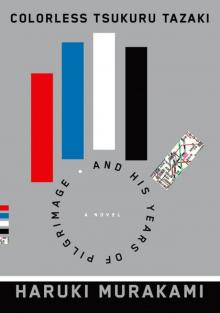 Colorless Tsukuru Tazaki and His Years of Pilgrimage
Colorless Tsukuru Tazaki and His Years of Pilgrimage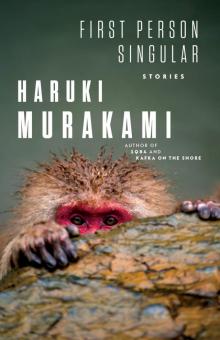 First Person Singular
First Person Singular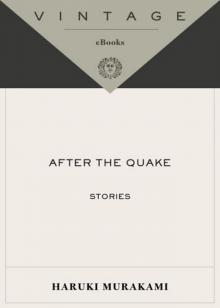 After the Quake
After the Quake A Wild Sheep Chase
A Wild Sheep Chase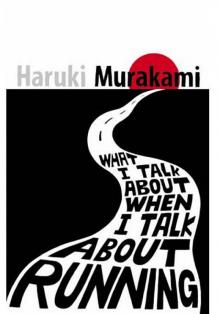 What I Talk About When I Talk About Running
What I Talk About When I Talk About Running Birthday Girl
Birthday Girl The Elephant Vanishes
The Elephant Vanishes Norwegian Wood (Vintage International)
Norwegian Wood (Vintage International)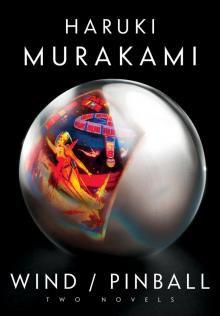 Wind/Pinball
Wind/Pinball Norwegian Wood Vol 1.
Norwegian Wood Vol 1. Underground
Underground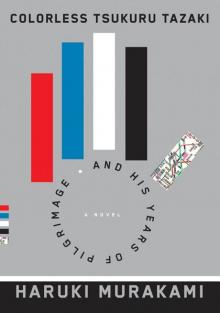 Colorless Tsukuru Tazaki and His Years of Pilgrimage: A novel
Colorless Tsukuru Tazaki and His Years of Pilgrimage: A novel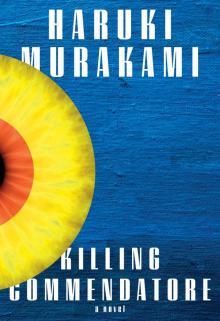 Killing Commendatore
Killing Commendatore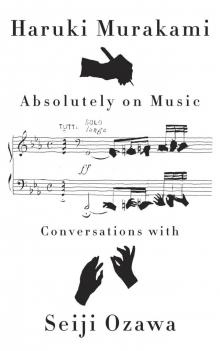 Absolutely on Music
Absolutely on Music